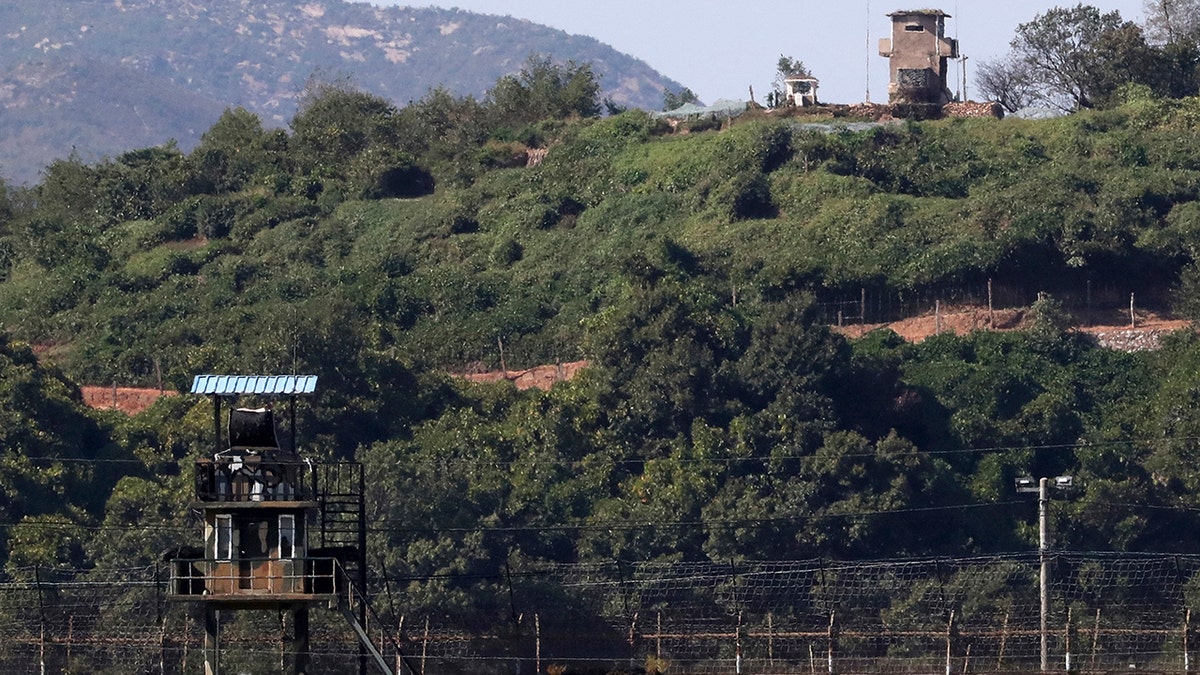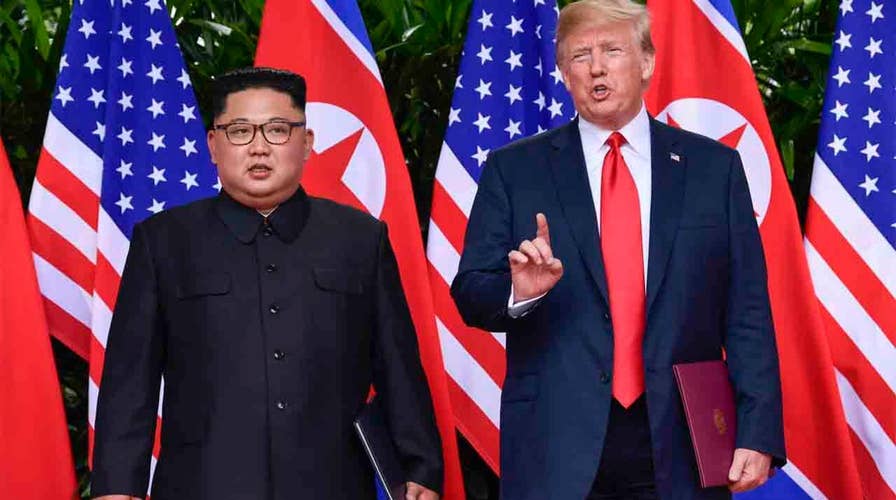North Korea says it won't denuclearize without trust in US
Asia analyst Gordon Chang says North Korea speech at the UN shows no real progress; insight on 'America's News HQ.'
Troops from North and South Korea have started removing some of the more than 800,000 landmines buried along the border between the countries amid the two nations’ resumed relations, officials said Monday.
South Korean army engineers and demining equipment were deployed Monday to the heavily fortified Joint Security Area in the village of Panmunjom and to the other frontline area called “Arrow Head Hill,” where hundreds of soldiers were killed during the Korean War. Panmunjom is one of the most famous sites in the Demilitarized Zone and is where the armistice was signed in 1953 to end the Korean War.
The move was agreed upon during a meeting last month in Pyongyang by the leaders of the two Koreas, Kim Jong Un in the North and Moon Jae-in in the South. It also comes as U.S. Secretary of State Mike Pompeo is set to visit North Korea’s capital this month to try to set up a second summit between Kim and President Trump.

Seoul says South Korea has begun clearing mines from two sites inside the heavily fortified border with North Korea under a package of tension-reduction deal between the rivals. (Kim Do-hoon/Yonhap via AP)
In the South, troops began removing mines on the southern part of the two sites on Monday morning. Later in the day, North Korean soldiers were detected engaging it what is believed to be demining of the other part of the sites, a Seoul official said Monday.
The official refused to provide more details. North Korea’s state media didn’t immediately confirm the reported demining.
All the landmines in the Joint Security Area – the only portion of the DMZ where forces stand face-to-face – are expected to be removed within 20 days. After the work is completed, guard posts and weapons will be removed and unarmed troops will remain stationed in the area, a statement by South Korea’s defense ministry said on Monday.
Experts believe the South Korean and U.S. militaries have planted about 1-1.2 million mines south of the DMZ while North Korea has put about 800,000-1 million mines on its side. It's not known how many mines are at Panmunjom and Arrow Head Hill, but military commentator Lee Illwoo said the Koreas would be able to clear tens of thousands at most.
"It's the start of peace," said Kim Ki-ho, head of the private Korea Mine Clearance Research Institute. "We have to remove those mines, though we are not taking out all the mines at the DMZ."
Mines dislodged by flooding and landslides have occasionally caused deaths in front-line areas in South Korea. In 2015, a landmine blast blamed on North Korea maimed two South Korean soldiers and pushed the Koreas to the brink of war.
"It's the start of peace. We have to remove those mines, though we are not taking out all of the mines at the DMZ."
At Arrow Head Hill, where some of the fiercest battles occurred during the Korean War, Seoul officials believe there are remains of about 300 South Korea and U.N. forces, along with an unspecified number of Chinese and North Korean remains.
The Koreas remain split along the 155-mile-long DMZ that was originally created as a buffer zone at the end of the Korean War. About two million mines are believed to be scattered in and near the DMZ, which is also guarded by hundreds of thousands of combat troops, barbed wire fences and tank traps.
At an event marking South Korea’s 70th Armed Forces Day on Monday, Moon said the military deals will “end all hostile acts on land, sea, and sky between South and North Korea.”
Moon, a liberal who aspires to improve ties with North Korea and who has been a driving force behind U.S.-North Korean nuclear diplomacy, also called for a strong national defense, saying “peace can continue only when we have power and are confident of protecting ourselves.”
Many experts say the fate of inter-Korean deals can be affected by how nuclear negotiations go between the United States and North Korea. Past rapprochement efforts were often stalled after a standoff over the North's nuclear ambitions intensified.
After provocative tests of three intercontinental ballistic missiles and a powerful nuclear weapon last year, North Korea entered talks with the United States and South Korea earlier this year, saying it's willing to deal away its expanding nuclear arsenal. Kim has subsequently held a series of summits with U.S., South Korean and Chinese leaders and taken some steps such as dismantling his nuclear test site.
The Associated Press contributed to this report.

